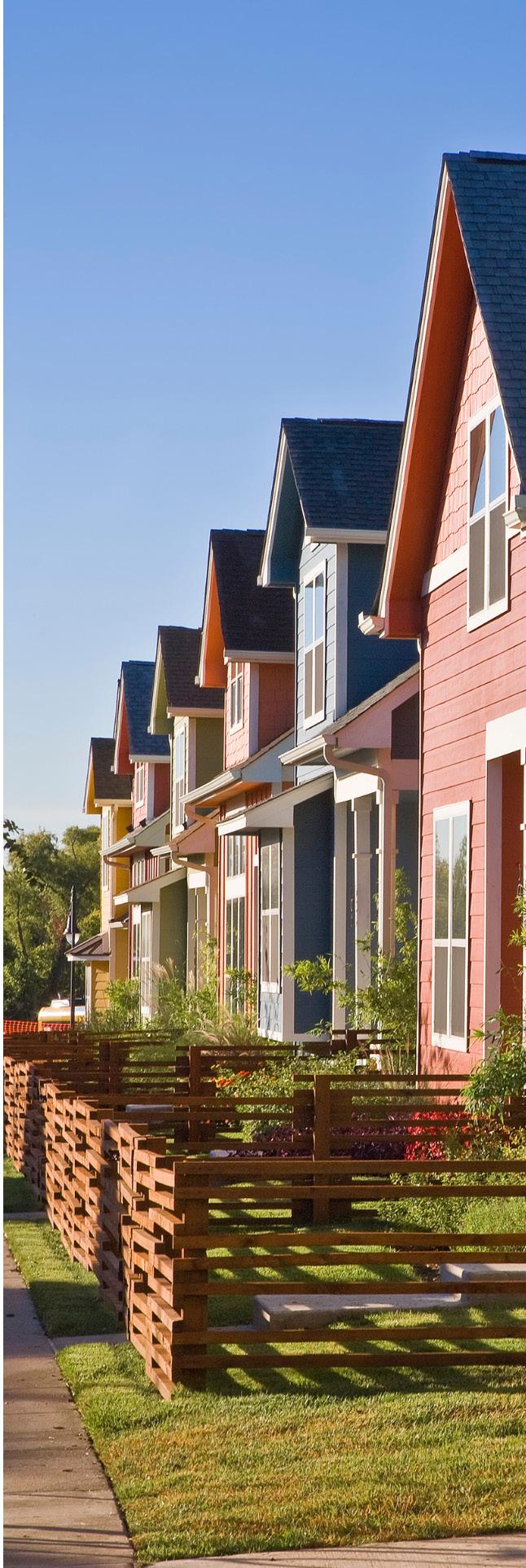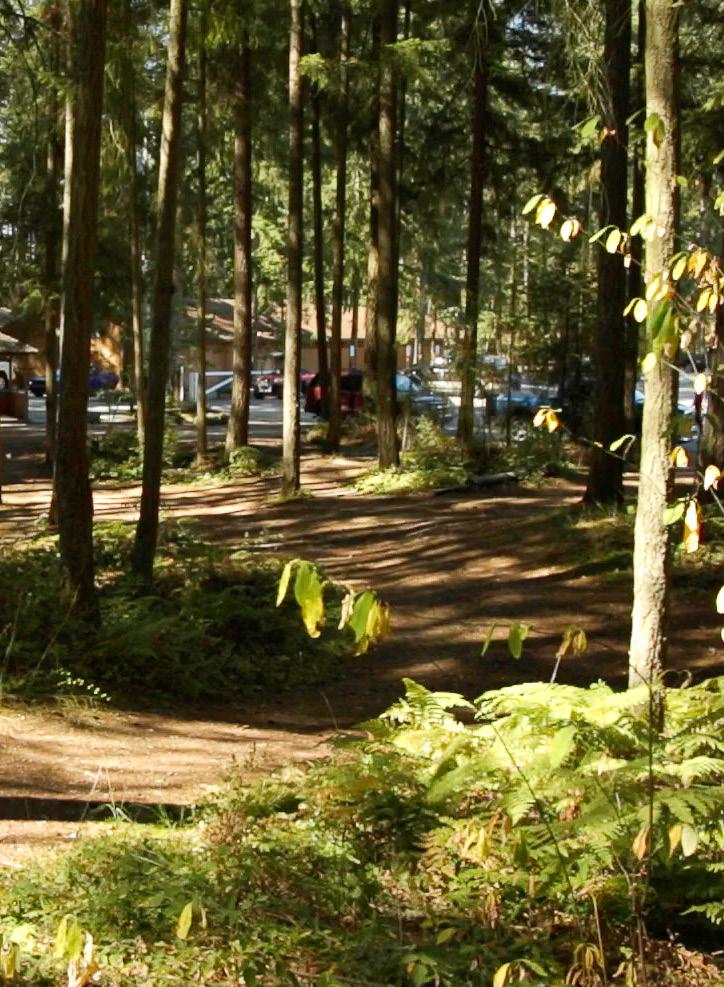























We’re creating a future where:
Housing is more affordable Development is designed with people and the planet in mind Neighborhoods are more walkable
Plans for 32,000 new housing units in the urban unincorporated area by 2044 and increases the capacity for residential development in urban unincorporated areas by up to 250,000 residences to meet long-term demand.
Streamlines how we permit new developments, diversifying housing types and expanding incentives like the Multifamily Tax Exemption to track housing for families at all income levels.
In urban areas, we’re making it easier to add accessory dwelling units (ADUs) by increasing the number allowed and reducing regulatory barriers.


Allows daycare centers in residential neighborhoods, increasing options for working families.
Limits development in high-risk flood zones to protect people and property from hazards.
Improves the ability to conserve rural lands while increasing housing supply by expanding the policies and resources for the Transfer of Development Rights program.
Conserves land and promotes sustainable development patterns by focusing growth in urban areas while simultaneously slowing rural residential development in order to preserve land for future generations. Rural growth is expected to account for only 3% of the total population growth over the next 20 years.
Limits inefficient land use on new developments and preserves development space supporting more jobs.
Calls for collaboration with cities and towns to annex urban unincorporated lands and reduce the Urban Growth Area where cities and towns are not interested in annexation.
Promotes higher residential densities near transit and community centers, helping people live closer to jobs, services, and daily needs.
New developments will follow universal design principles to improve mobility for people of all ages and abilities.
Ensures design review standards are clear and objective to provide consistent review and application of code for all projects, giving developers and communities more predictability.
We’re reimagining how people move through our County, prioritizing safety, accessibility, and flexibility with a forward-thinking, multimodal approach.




Transportation goals are rooted in safety and focused on implementing Vision Zero, Safe Routes to Schools, ADA Transition, and Regional Trail Plan recommendations.
We support alternatives to traditional road widening where expansion isn’t feasible by funding active infrastructure along a corridor before the number of cars significantly compromises a road’s ability to handle traffic.
Our plan allows for more strategic, cost-effective congestion solutions using Transportation Demand Management (TDM), operational strategies, and active transportation improvements.
We promote walking and biking through policy, prioritization criteria, updating the Pierce County Bike Map to identify current routes, and a dedicated active transportation project list that incorporates regional trails.
We are improving transit stops and enhancing routes to boost ridership while also integrating bus shelters into new development projects, strengthening access to public transportation.
Our approach includes criteria for siting regional transit facilities, which help connect more people to jobs, services, and opportunities.

A healthier, more connected community.
We’re building a healthier, more resilient future where parks, trails, and natural spaces enrich daily life, support sustainability and a clean environment, and connect every corner of Pierce County.





Our trail network is designed for both enjoyment and mobility, linking people to nature and neighborhoods through safe, accessible walking and biking routes.


Our goal is to have a park within a half-mile walk of every urban resident. We’re identifying areas that need more parks, and prioritizing funding for construction in those areas.
We are emphasizing the growth of trails because of the many values they provide a community, including connectivity, recreational use, and land preservation.

We are adopting a goal of conserving up to 100,000 acres of natural areas, farms, and working forests. These landscapes store carbon, filter water, and offer places for outdoor recreation and wildlife to thrive.
We set a 40% tree canopy goal for the urban area to improve air quality, cool urban neighborhoods, and strengthen climate resilience—starting with an inventory of existing green infrastructure.
We’re expanding open space access by providing incentivizes to private landowners and collaborating with government agencies and community groups to create public-use areas and preserve natural lands.
We are advancing Pierce County’s goal by promoting renewable energy, expanding and maintaining tree canopy, and supporting programs that increase transportation choices.
We're improving air quality, expanding sewage infrastructure, and ensuring all stakeholders have the tools to participate in developing environmental policies.


We are encouraging low impact development, addressing containment of emerging concerns — including "forever chemicals" — and exploring the creation of an aquifer protection area to fund strategies that protect groundwater from contamination.
Through strong fiscal policies and collaborative management, we’re protecting and enhancing parks and open spaces for generations to come and maximizing public benefit with every dollar.
We're safeguarding Pierce County’s natural resources and cultural heritage while supporting development that benefits both people and the environment.
We’re committed to meaningful collaboration with our four Medicine Creek Treaty Tribes in staff-to-staff and government-to-government consultations to protect the rich history of Pierce County.
Expanding protection
We're conserving thousands of acres of land, wetlands, streams, wildlife habitats, and riparian management zones with high ecological value.
Cultural resource protection
Our plan lays the framework to establish local regulations for how we will preserve and protect the wealth of archeological sites and historic buildings in Pierce County.
Safer communities
We will strengthen protections for existing and future residents living in or near landslide hazard areas, reducing public health and safety risks as the County grows.
Balancing growth with mitigation banking
By enabling mitigation banking programs, we’re making it easier to balance environmental protection with growth needs for more housing and infrastructure.

Our updates provide clearer guidance on when a critical area review is needed and is aligned with neighboring jurisdictions to offer predictable, consistent outcomes for residents, developers, and planners.
Clear guidelines will help avoid adverse impacts to irreplaceable cultural resources and artifacts for all communities in Pierce County.


We’re supporting a thriving Pierce County economy by empowering small businesses, expanding job opportunities, and investing in innovation and local agriculture.
We are helping entrepreneurs and small businesses succeed by creating opportunities to provide input on policies, providing opportunities to grow their businesses and work with us on regulation compliance.
We are encouraging emerging, innovative, and sustainable industries by recruiting small businesses and entrepreneurs in priority sectors and by cultivating a more stable and predictable entrepreneurial environment.
Our plan expands agritourism and supports local healthy food production by amending regulations to allow supportive uses like farm stands, farm stays and U-pick farms.
We're promoting education and training for a wider array of career paths and training opportunities for fields that do not require a college degree. This includes job-matching services that connect workers with local employers and Career and Technical Education (CTE) programs.
Pierce County is growing and we’re preparing by updating infrastructure plans to build strong, healthy, and connected communities. We're making thoughtful decisions about where essential services are located, ensuring they meet regional needs while respecting local communities.
We’re updating our public service standards to keep up with the County’s expected growth over the next 20 years.
Some public facilities, like solid waste sites or opioid treatment centers, are important but can raise concerns in communities This guidance helps decide the best locations for these essential services while balancing community needs.
We’re prioritizing access to essential services for communities that have been historically underserved. This includes cleaning up toxic properties, improving emergency response, and supporting high-speed internet access in rural areas.
To support environmental health and water efficiency, the County will have the option to operate as a water utility. This means we can explore the use of reclaimed water and manage failing water systems, making sure every resident has access to clean and reliable drinking water.
We're ensuring that residential wells do not remove ground water necessary for protecting fish, wildlife, and recreation.
When choosing where to place public facilities, we look at climate impacts and explore ways these sites can support the community during emergencies, like offering cooling centers during extreme heat events.













































